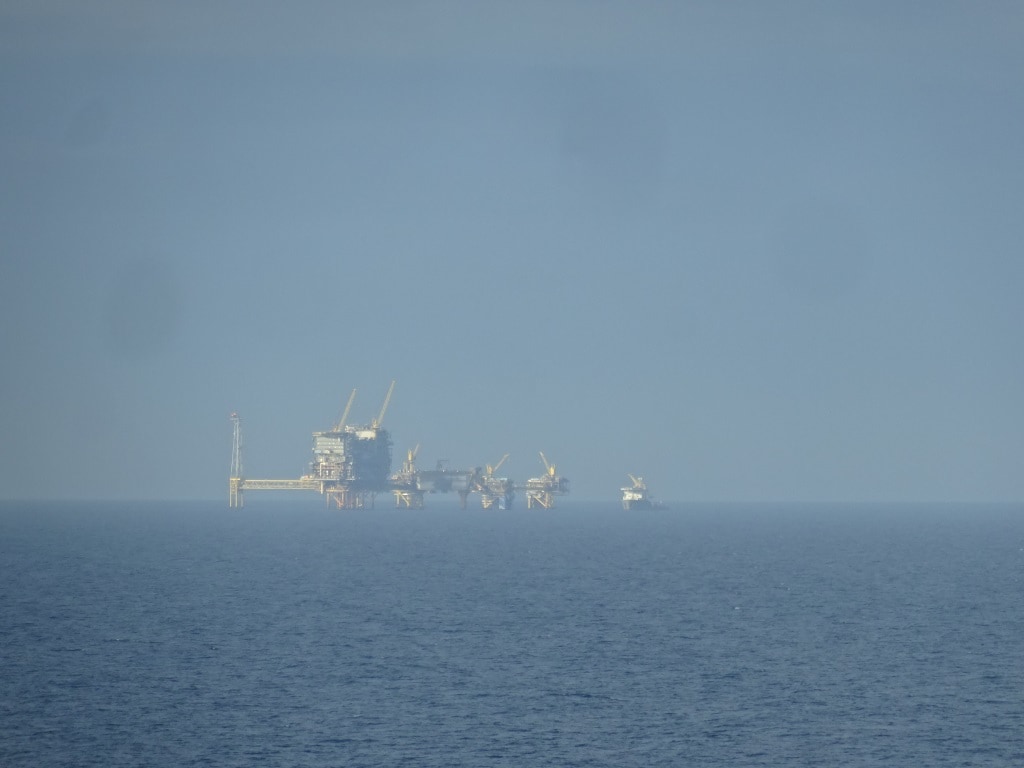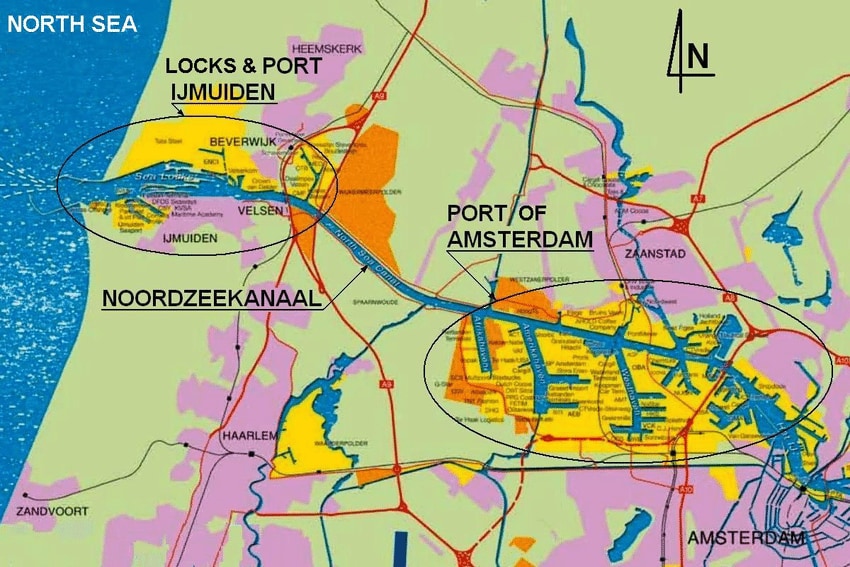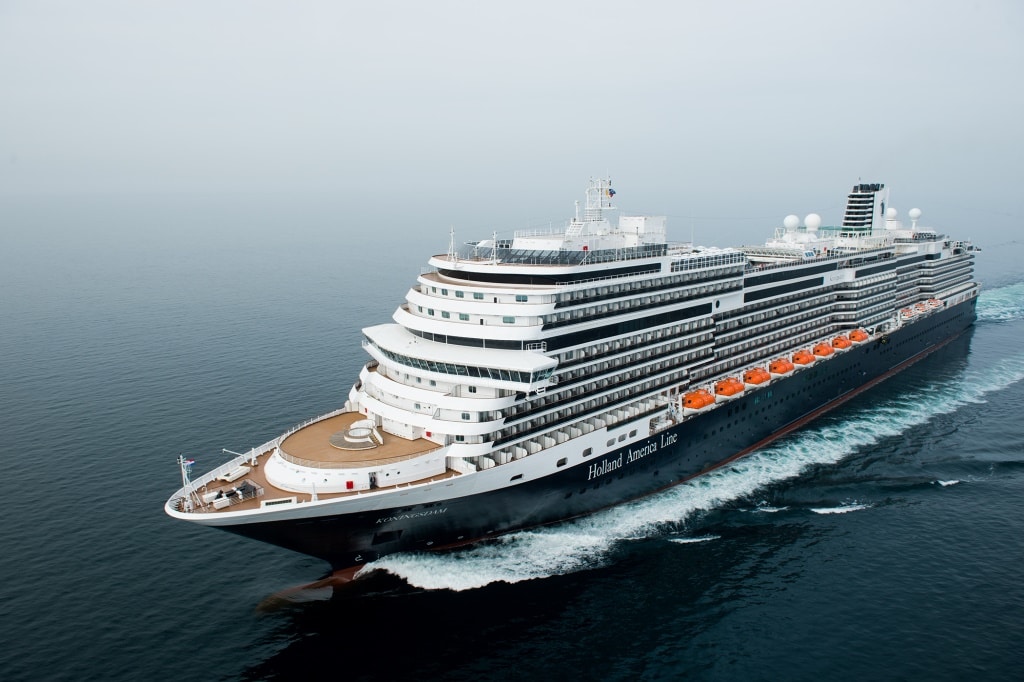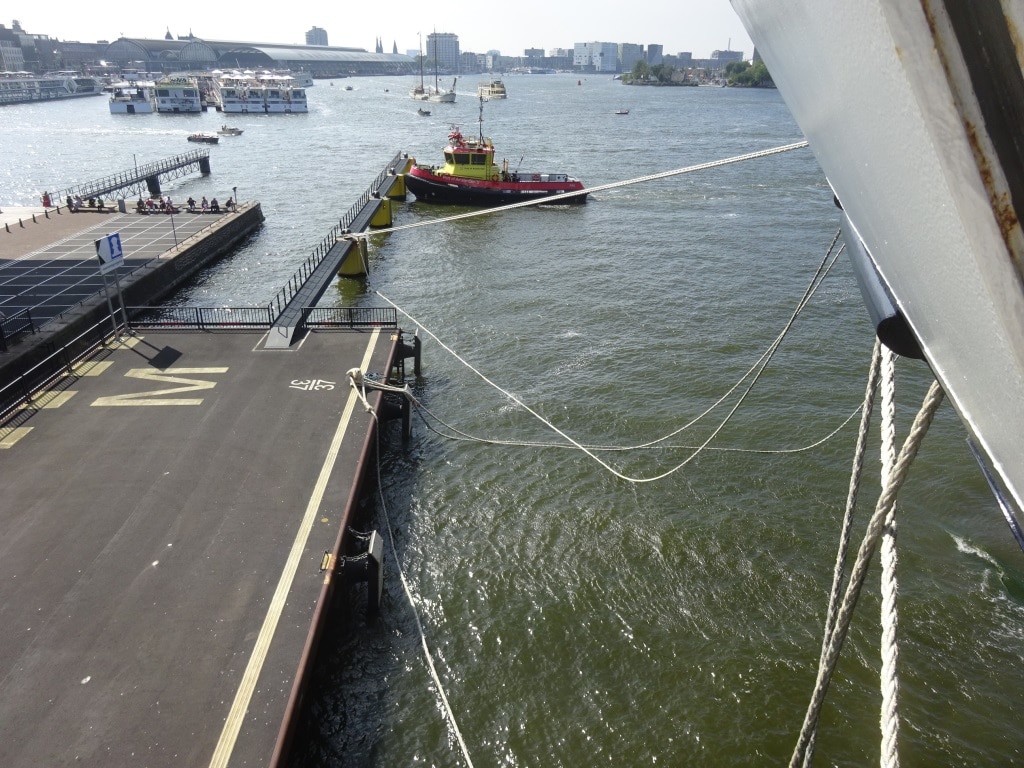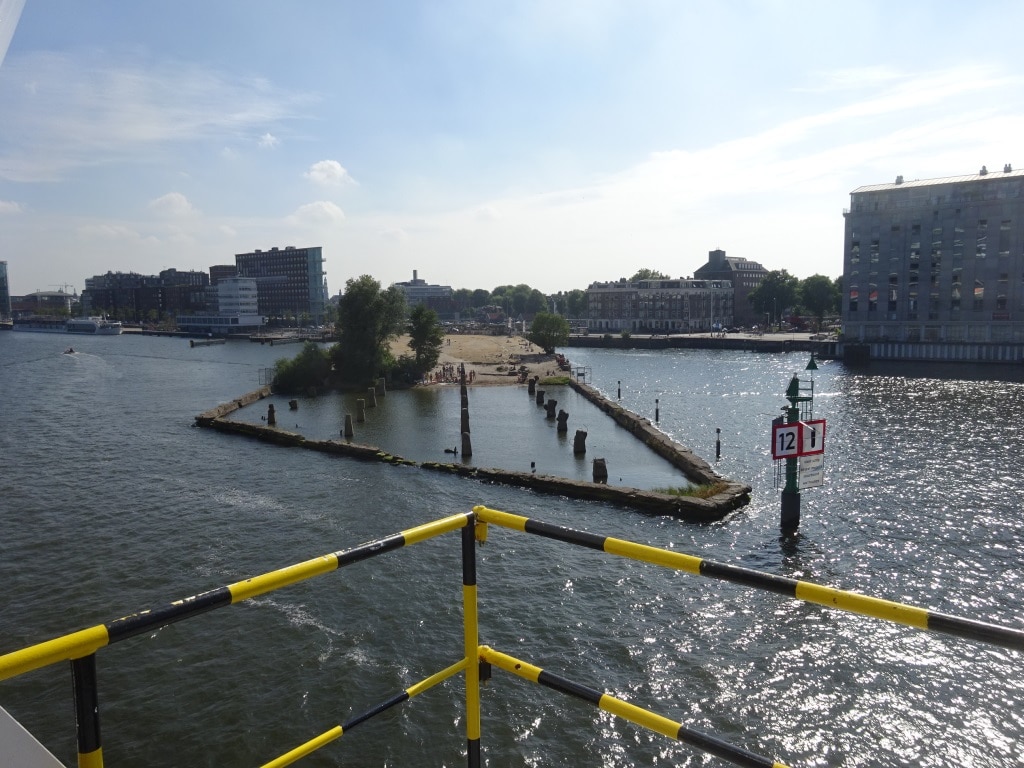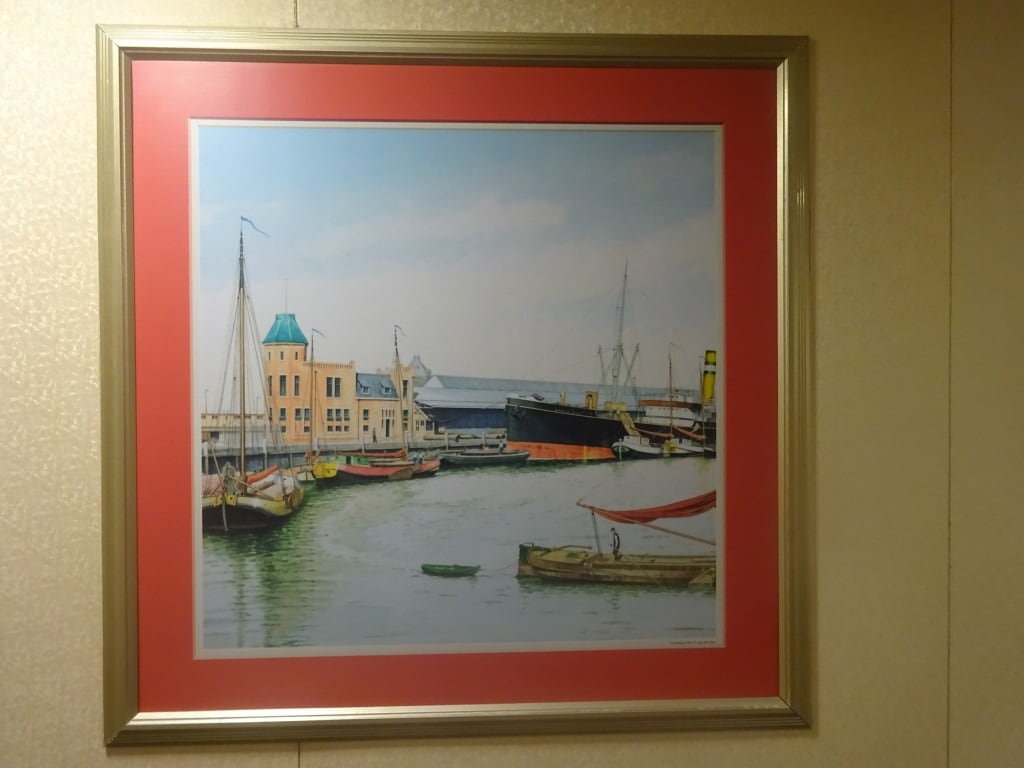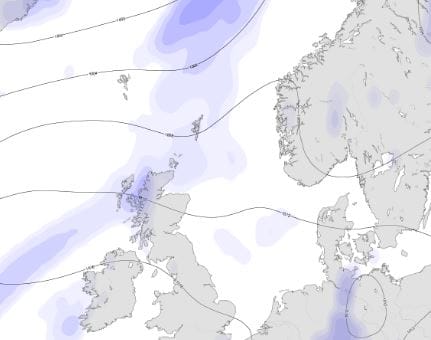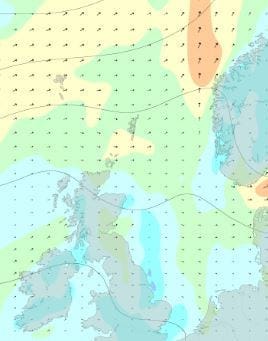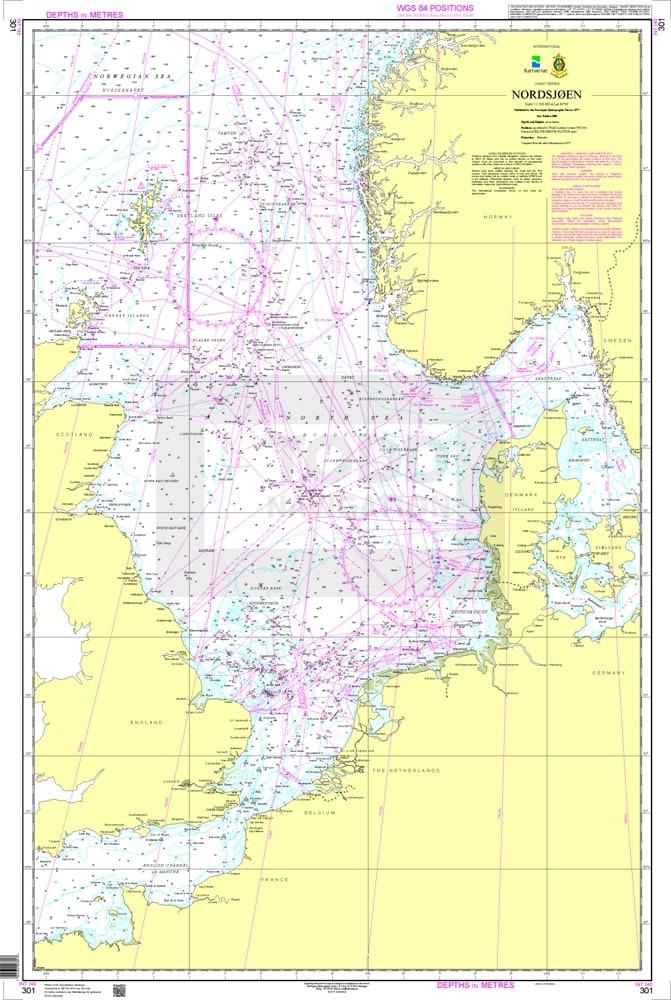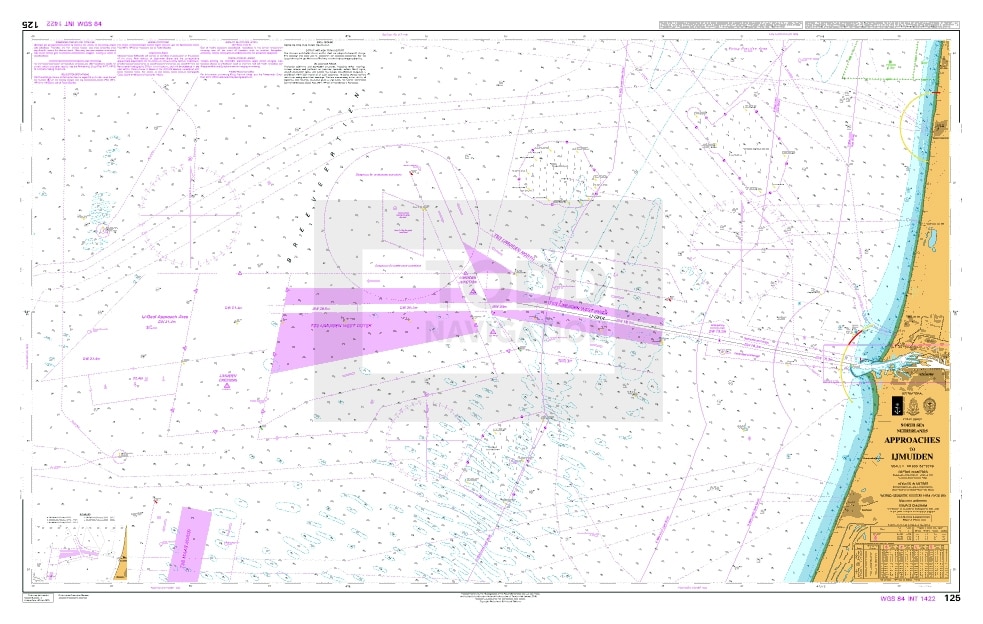Thus we are on our way back to Norway and we are sailing under a cloudy sky. Courtesy of the British who from somewhere conjured up thunderstorms and rain. We got a bit of that rain dripping upon us in Amsterdam but it was only enough to settle the dust, not enough to make the farmers happy. The cloud cover now extends over part of England, the North Sea, the Skagerrak and the Norwegian Sea. That will result in a cloudy day in Eidfjord with some rain in the late evening.
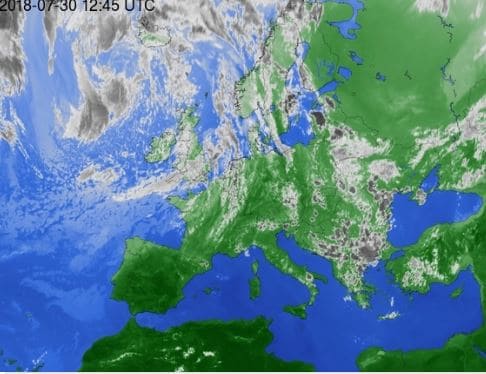
A band of cloud with rain and thunderstorms came over Europe yesterday, but should slowly move away in the coming days. For Norway it will depend on how it moves to get either sunny or rainy weather again. (Photo Courtesy www.WeatherOnLine.com)
Then this band of cloud should move by and sunshine should return. Although it is expected that the heat wave will also return to Scandinavia, but if it will, will depend on the way the Jet Stream will lay. Thus far it was instrumental in maintaining a large high pressure system over the whole of Europe and keeping the clouds away; but it only has to move up, or come down a little bit, and the whole thing can change. There is a chance that it all will settle on a slightly lower trajectory and if this happens than Scandinavia will get its rainy weather back and go to normal temperatures. Everything south of Edinburgh will remain in the hot zone.
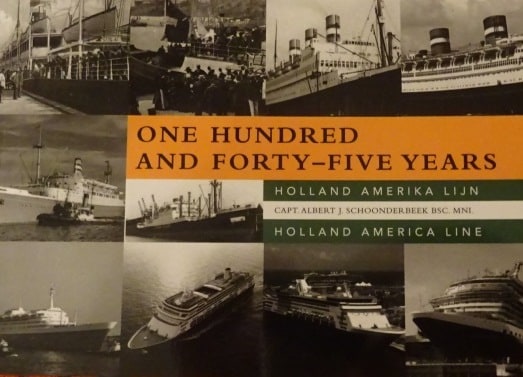
Published in soft back, size A 5 and 147 pages.
Whatever happens to the weather, I am a happy camper as yesterday I received the first copy of my new book: One Hundred and Forty-Five Years (of Holland America Line). As the last book with the complete history (400+) pages came out in 1998 and is only available 2nd hand anymore; I thought it was time to do something new. Instead of making yet another standard work, I went for a descriptive option, with one page devoted to each year of the company’s history.
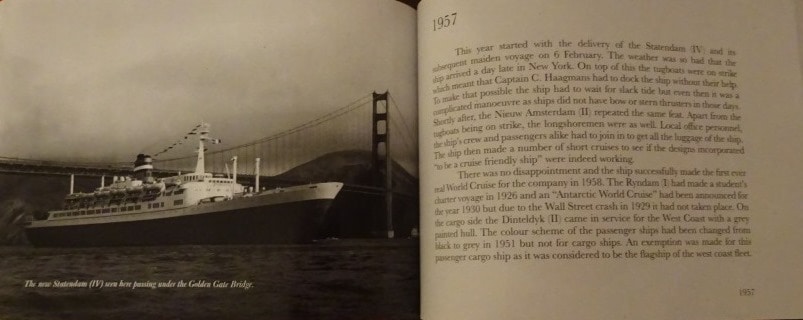
The photos from the older years are in black and white and then coming closer and closer to the current day they change to colour.
Thus 145 pages (but as we really started in 1871 with a small company which was transformed into Holland America, it is really 147 pages) with a text to the right and a fitting photo to the left. Although I think it is a wonderful book, we have to wait and see if the public agrees so the printer is going for low numbers at the moment. The shops on board have shown a tentative interest and hopefully that will work out. My publisher is working on revamping his website into English so –non Dutch speakers – can also get hold of a copy and that revamp should happen in the coming days. (ISBN 9-789492-368294 www.gunsathome.nl) Next project will be a similar book, but about the Cruise history of the company which started in 1895 and continues to the current day. Most authors have always focused on either the fleet itself or on the North Atlantic but Holland America organized some very fancy cruises in the past. Although some big dreams were cut short due to the depression or the world wars. (So now you know what I do during my time away from the sea)
As mentioned in my previous blogs, Holland America normally has one Tour focused port in its cruise while the rest of the ports are mixed options. (Those are for our cruise Alesund and Bergen) Eidfjord is our focused Tour port tomorrow as the town is very small but the hinterland extraordinary. From waterfalls, to Nature Centers & the Hardangervidda National Park, outdoors activities and taking a cruise on Hardanger fjord which gives access to Eidfjord. Most of the Holland America Tours offer a combination of visiting sights and lunch, drinks and nibbles, to offset the overpowering nature with a bit of social interaction. Everything here is close by and most tours do not need more than 30 minutes to get to a dedicated destination. You do not have to travel to get to see Mother Nature here, it will be around us 24 /7 and you also will be able to see it nearly for 24 hours a day as the Norwegian days are still very long.
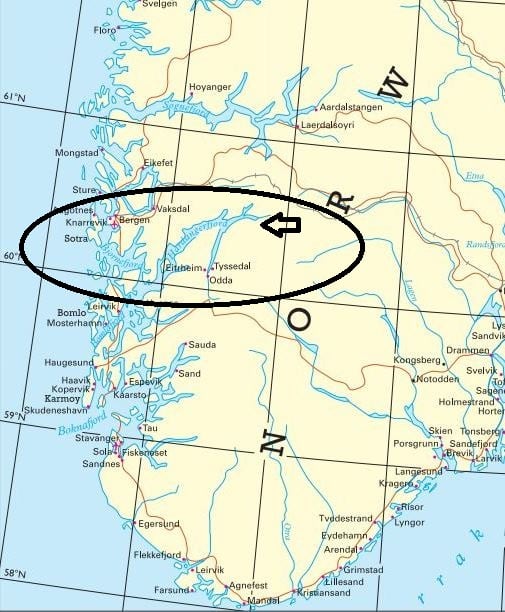
Hardanger fjord penetrates deep into the Norwegian land. Only Alesund and Bergen are fairly close to the sea. (Chart courtesy Lloyds World Atlas 2005)
For the captain and the navigation and engineering teams it will be again a long day as the pilot has been ordered for 02.15 in the morning and then we should be docked 07.00 in the morning. We are staying here until 15.00 hrs. and then we have to go the same way out.
Weather: Overcast with a chance of showers in the late morning and afternoon. 18oC / 65oF. Regular normal weather for Norway and as we will be tucked away deep into the fjord there should be hardly any wind.
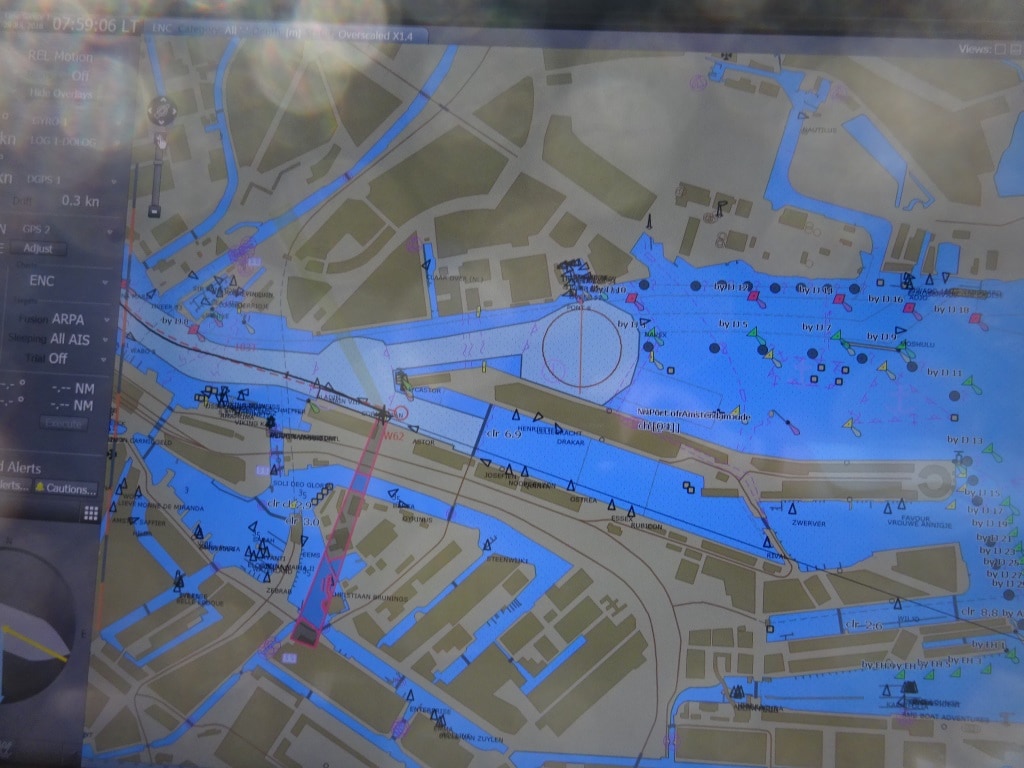
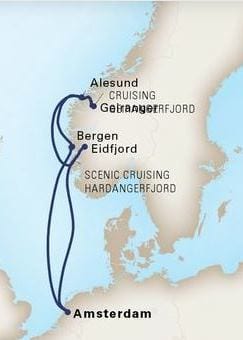
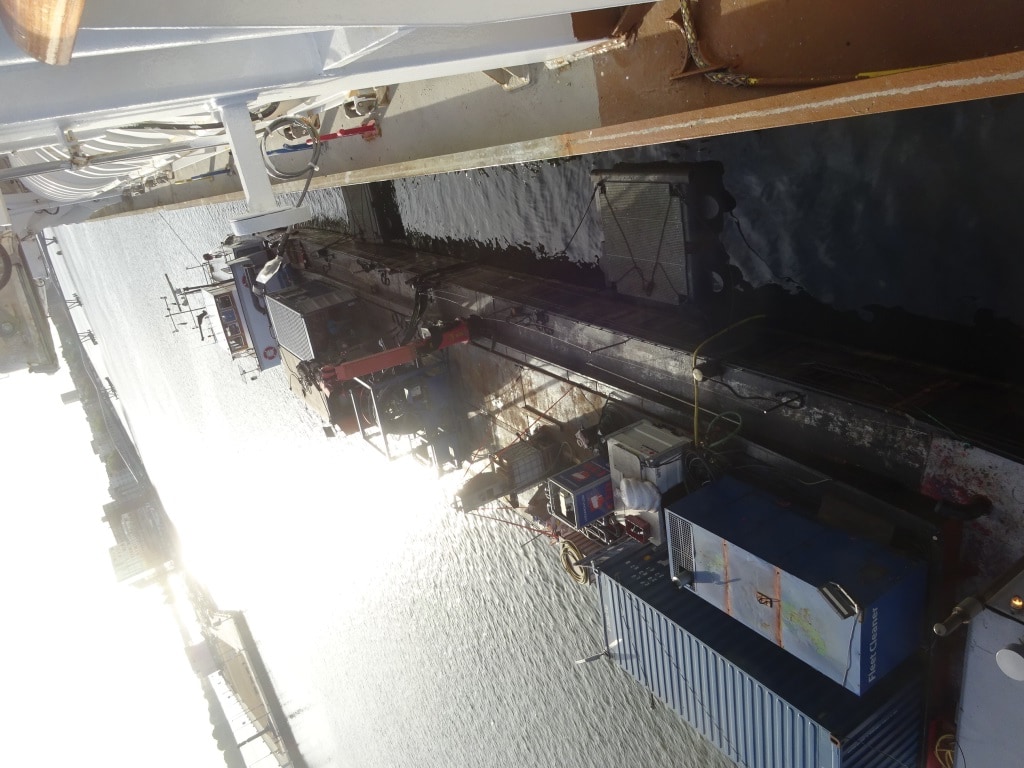
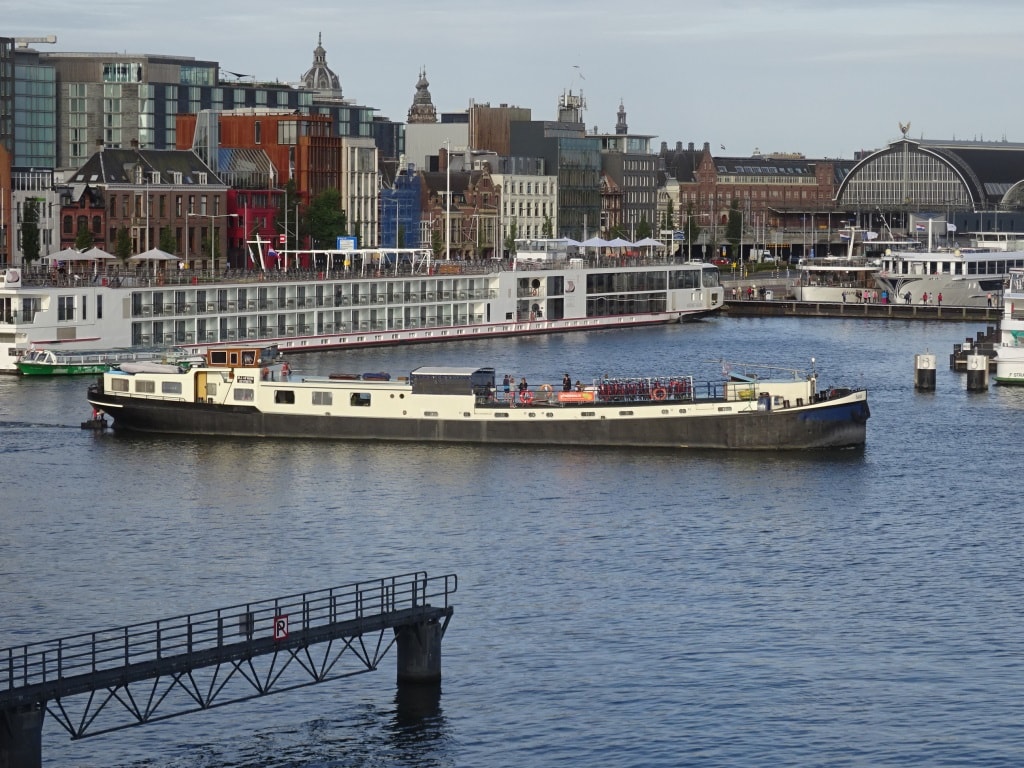
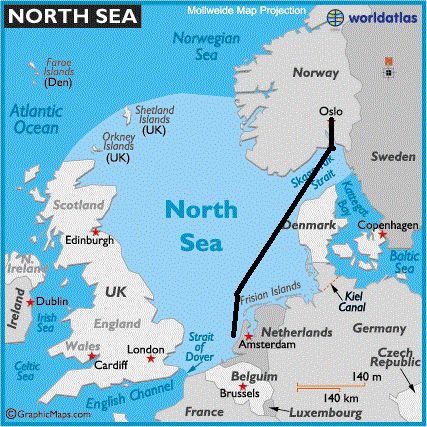
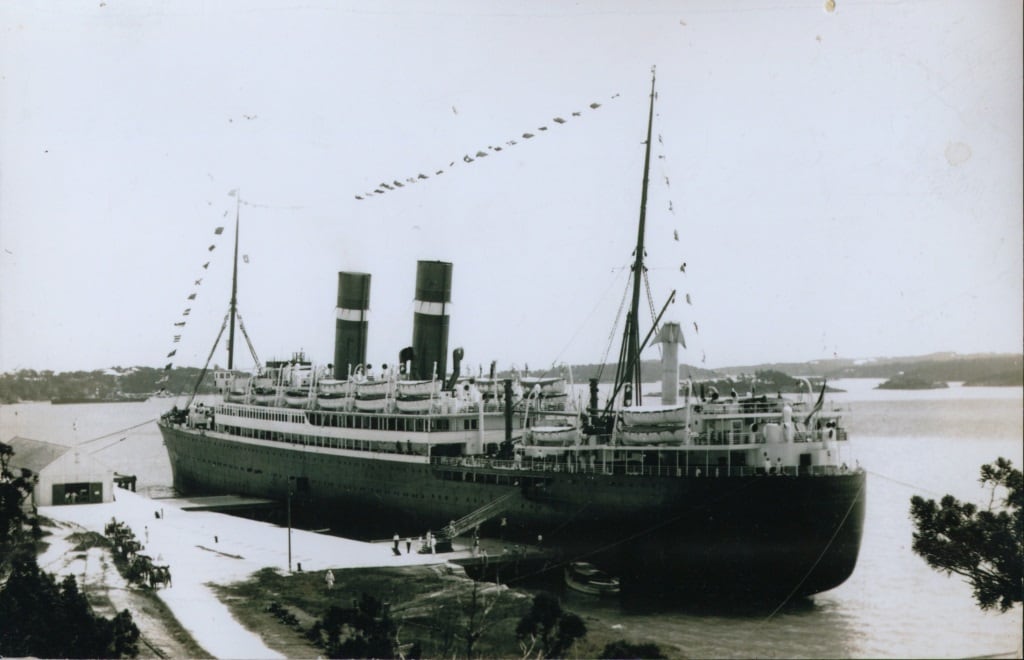
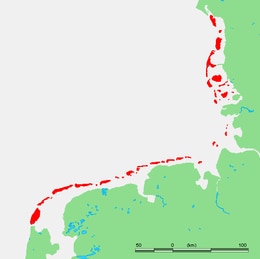
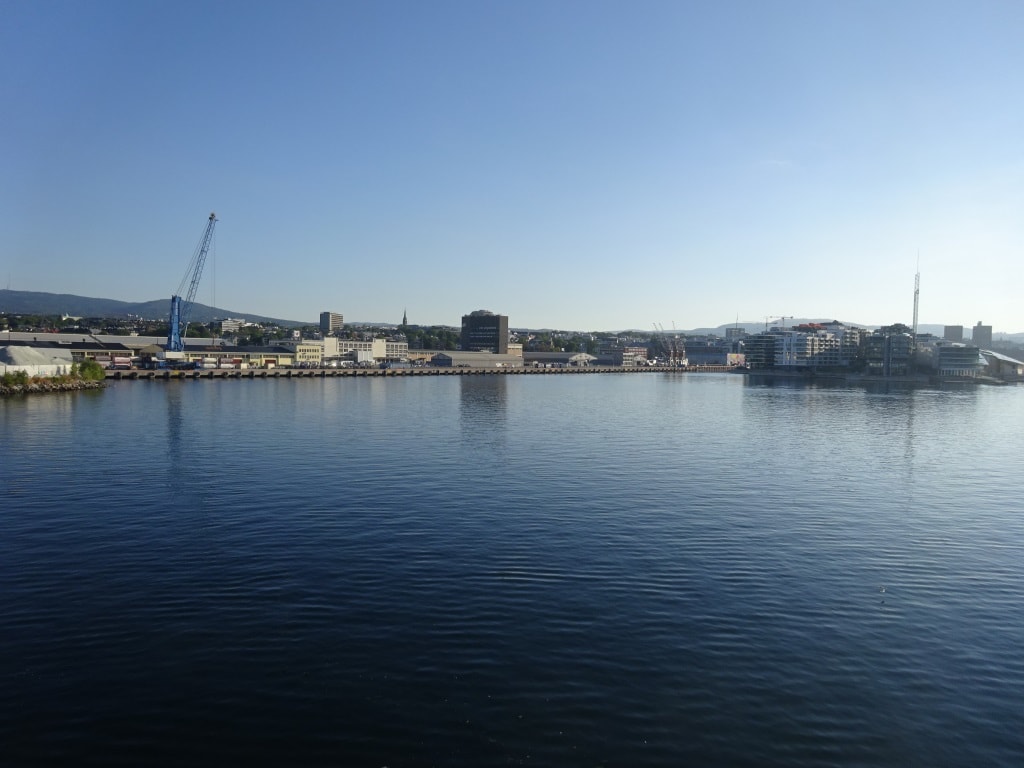
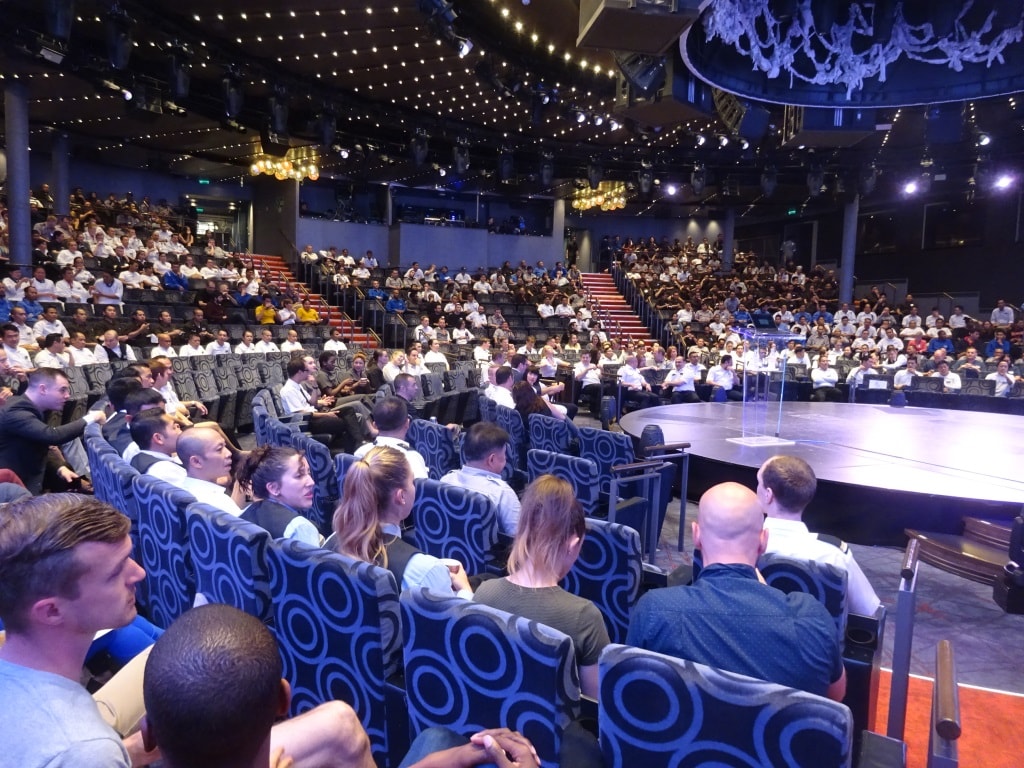
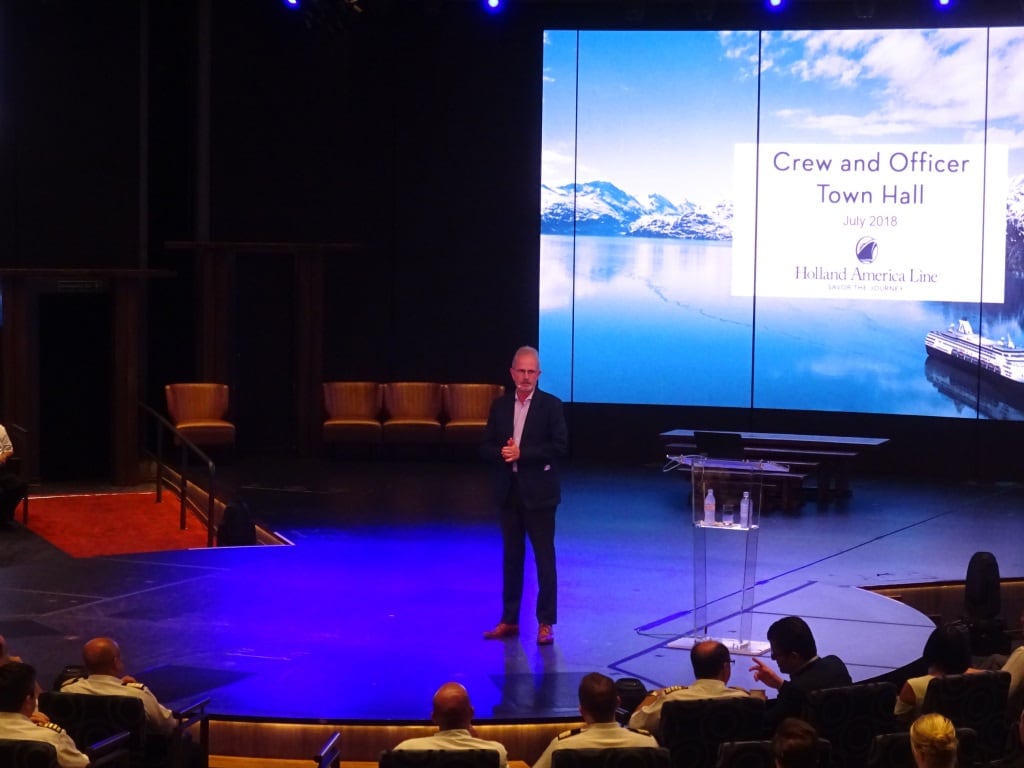
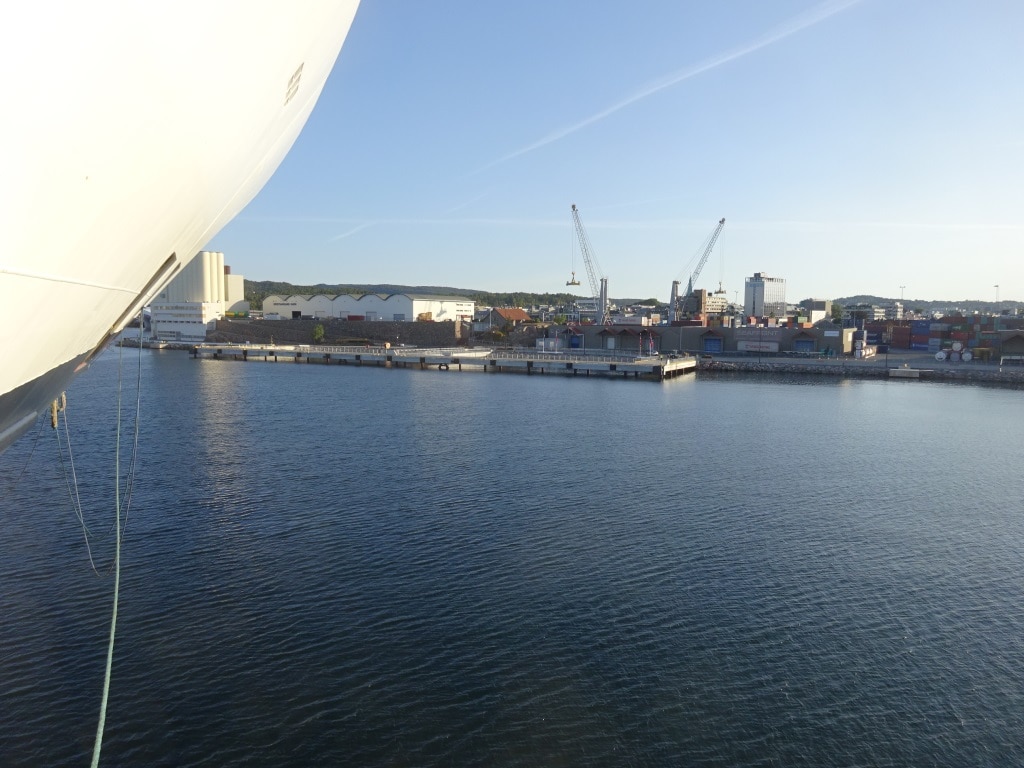
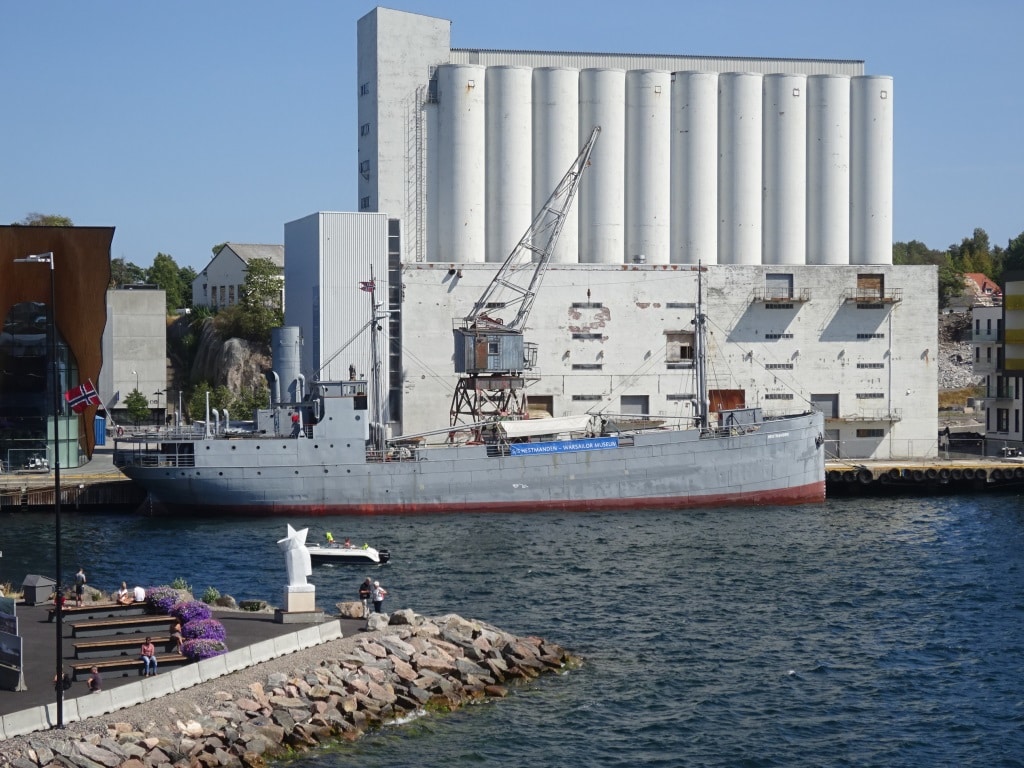
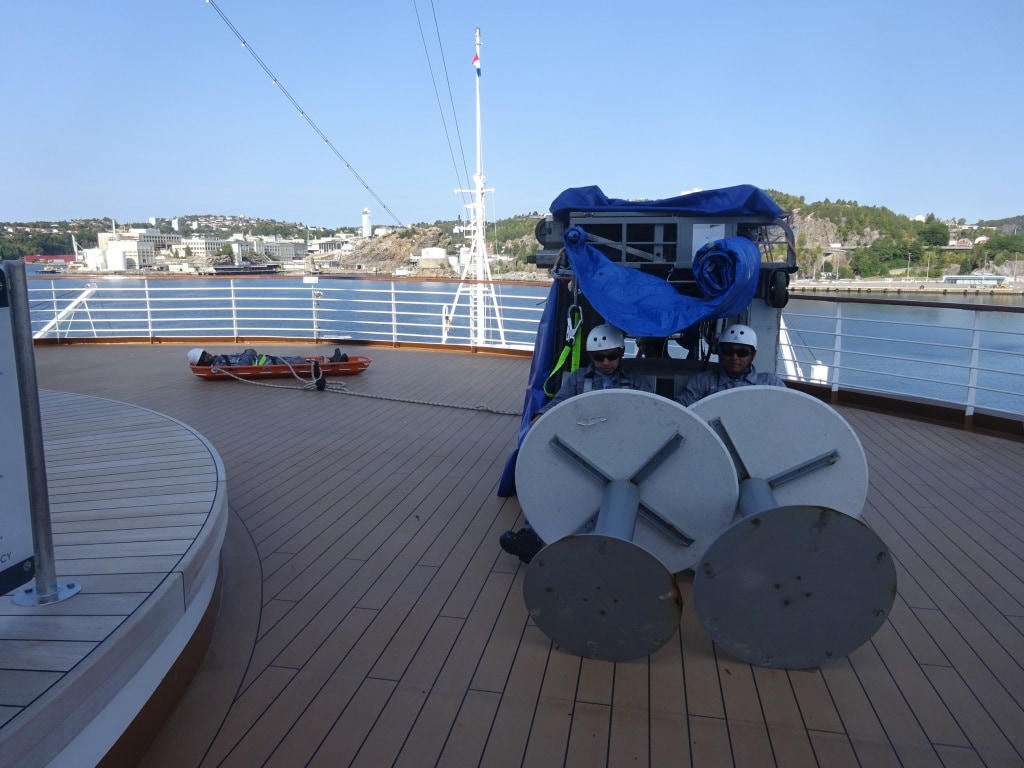
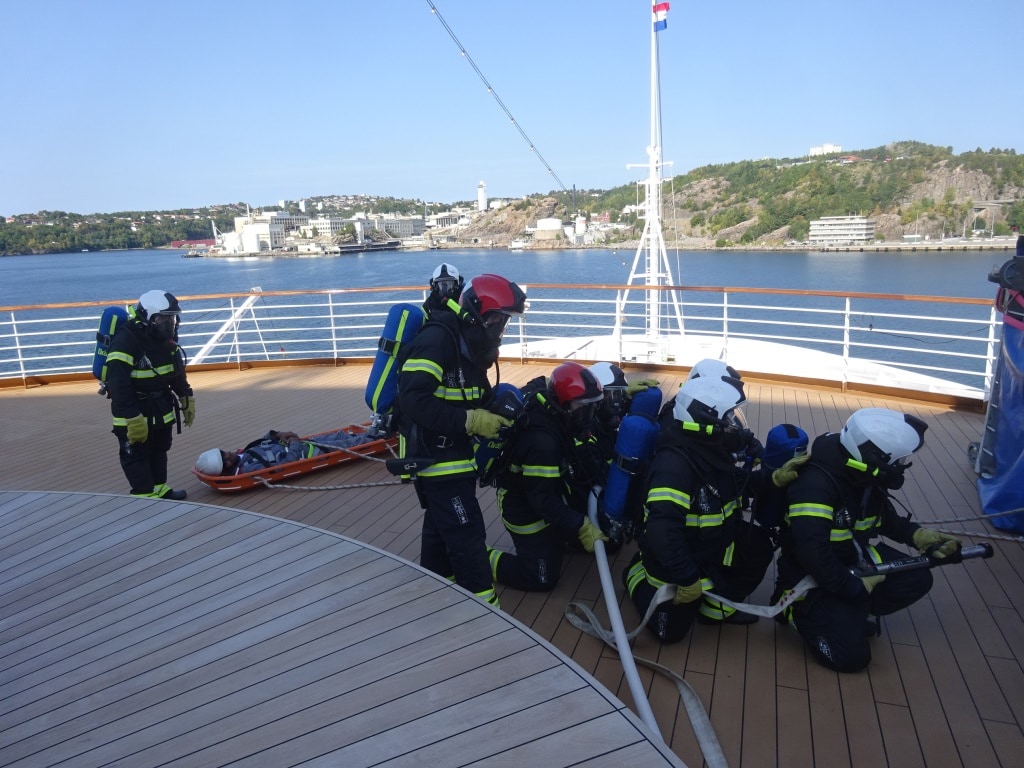
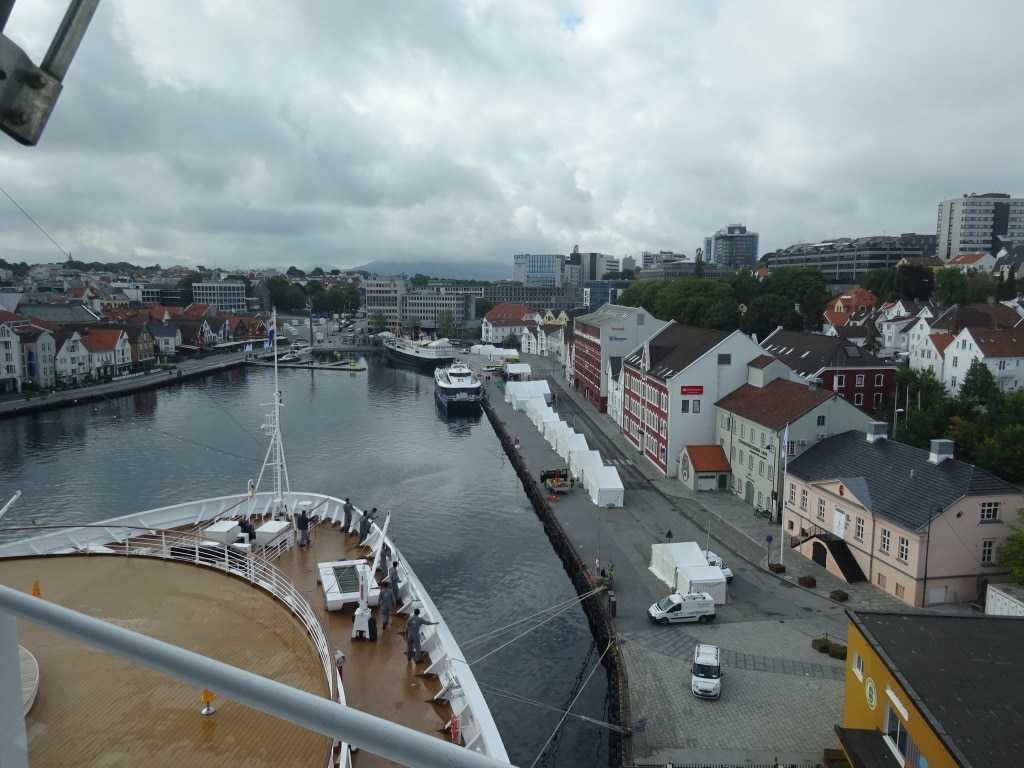
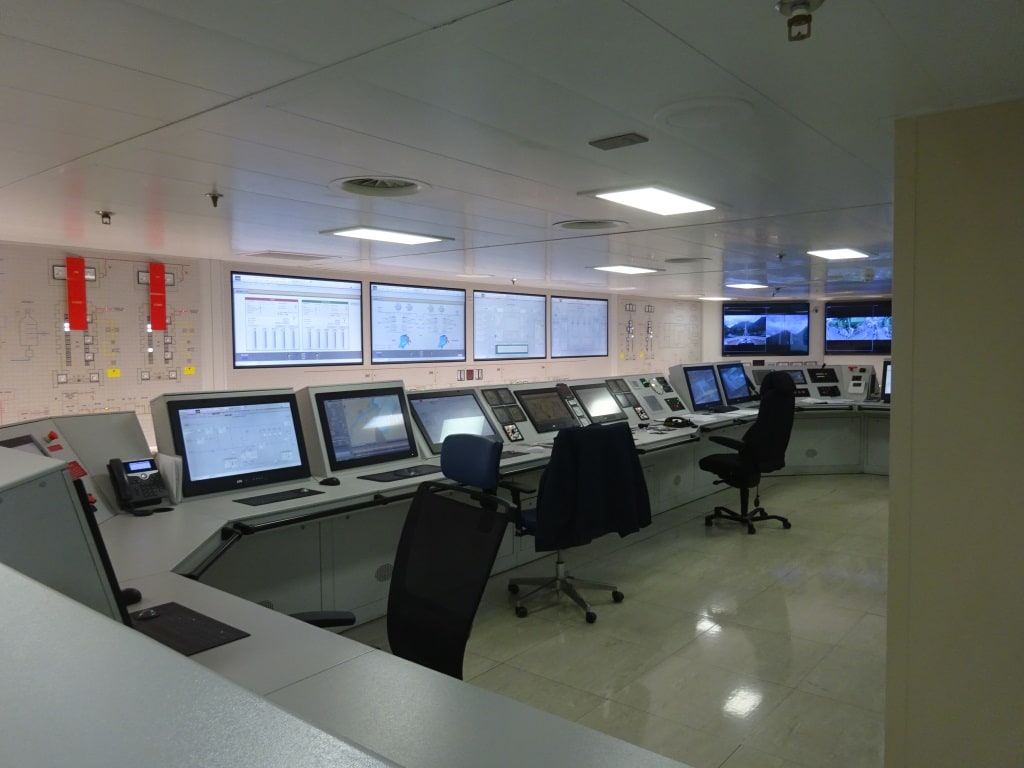
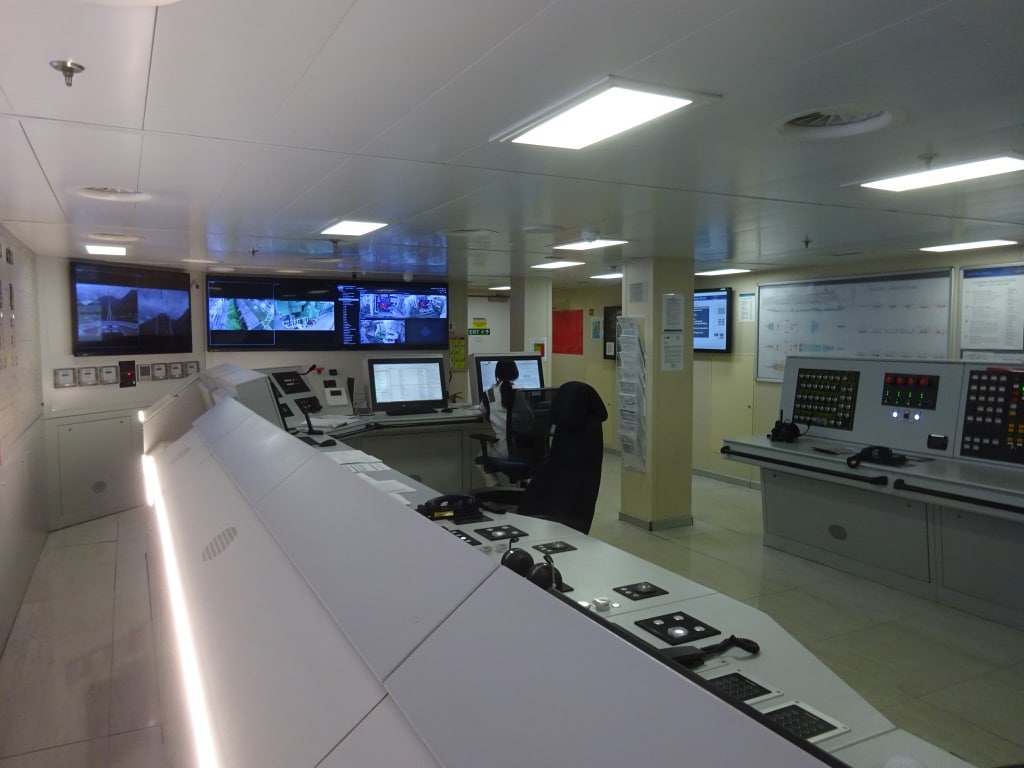
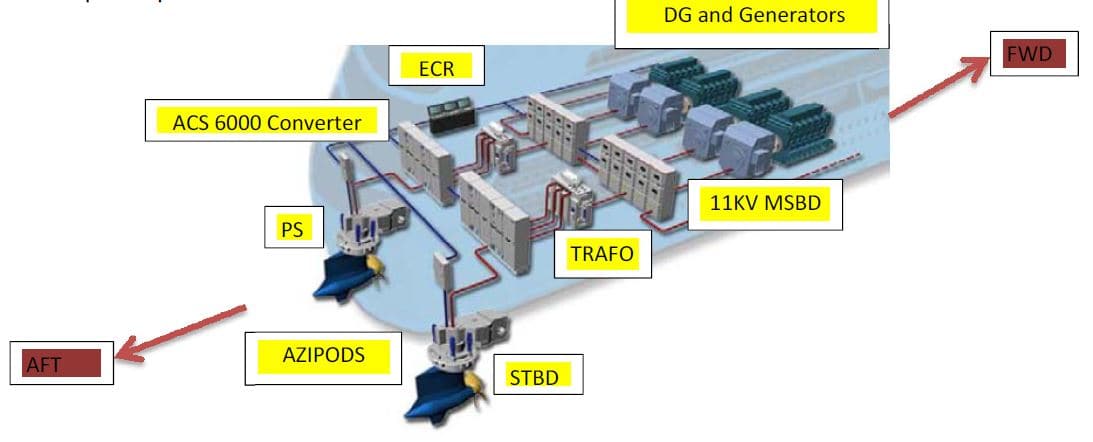
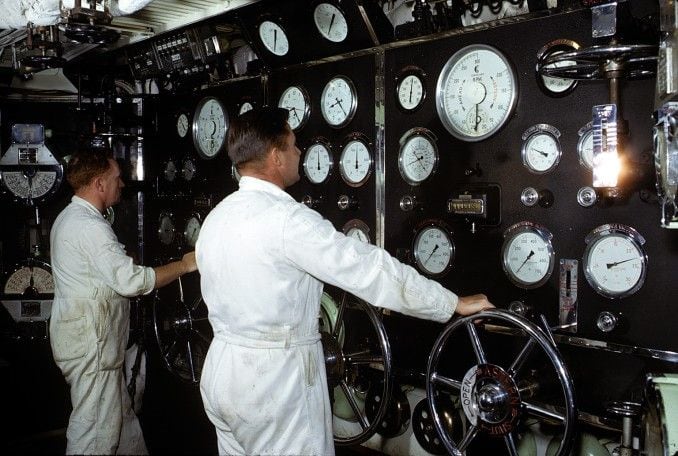
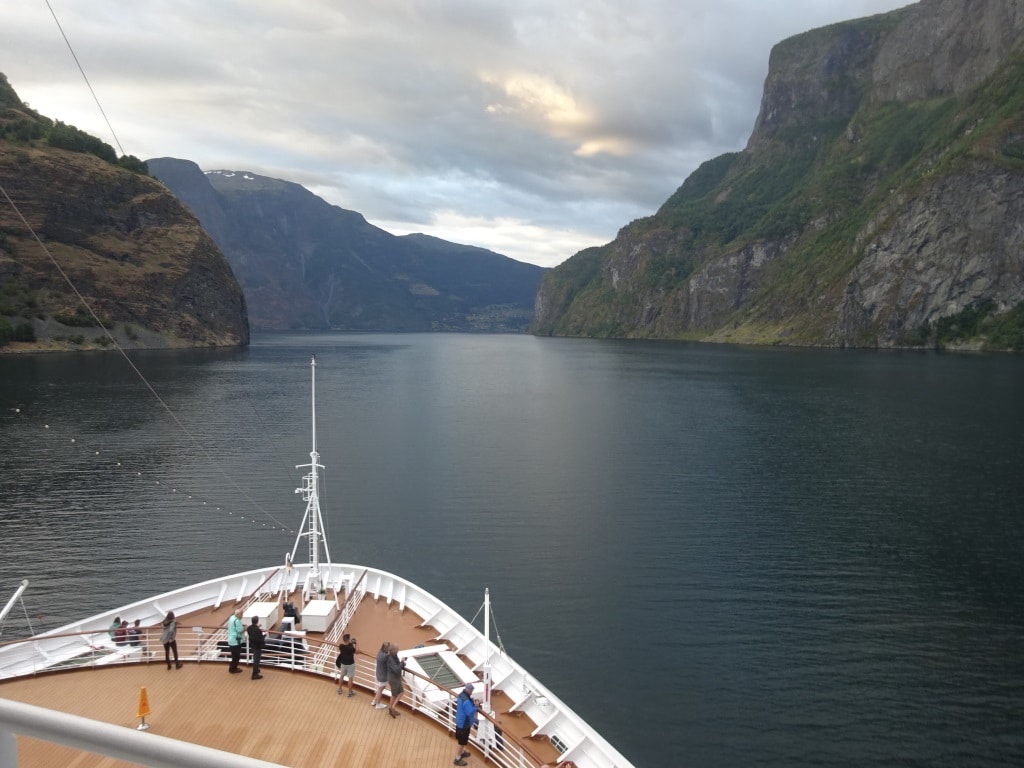
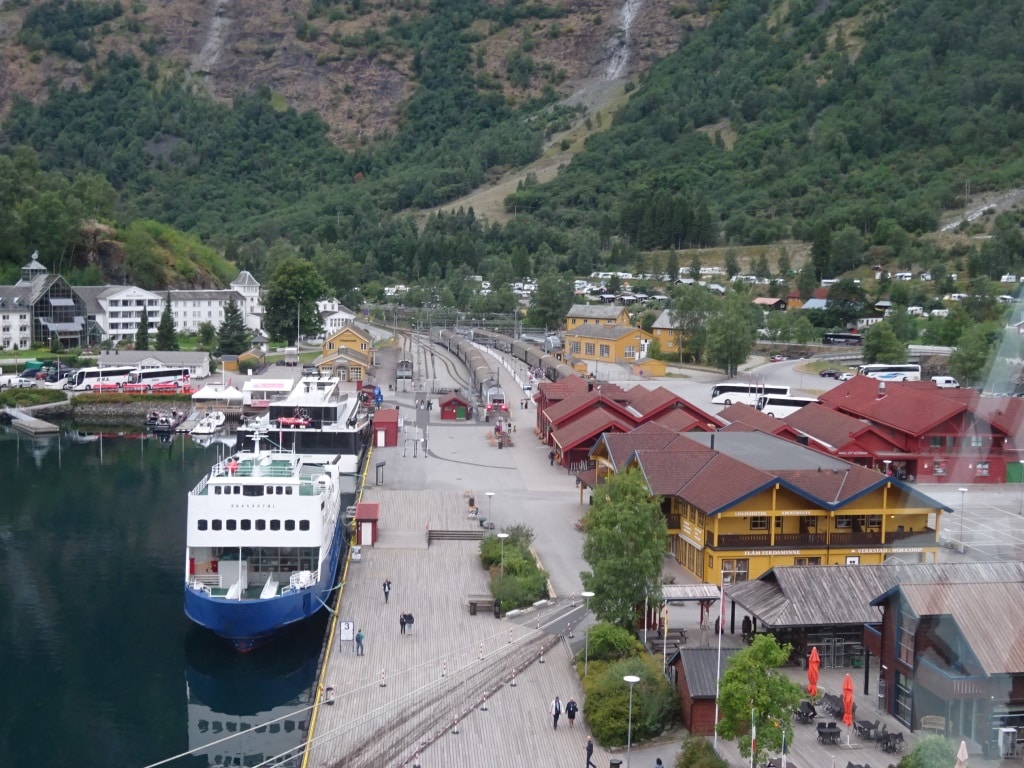
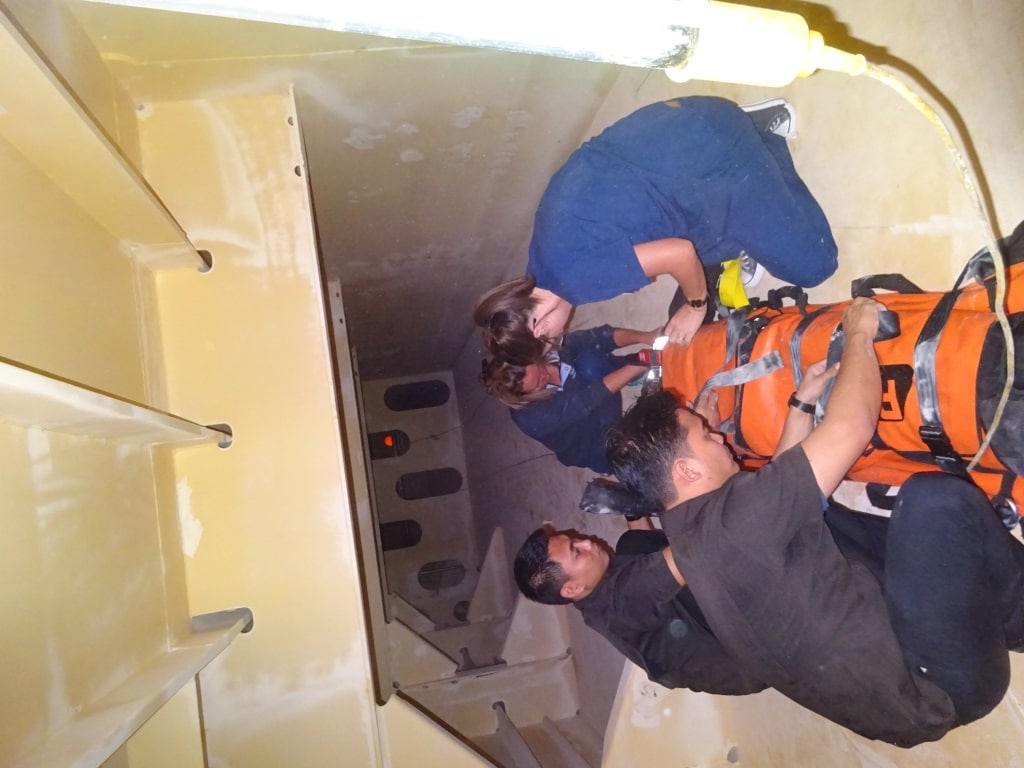
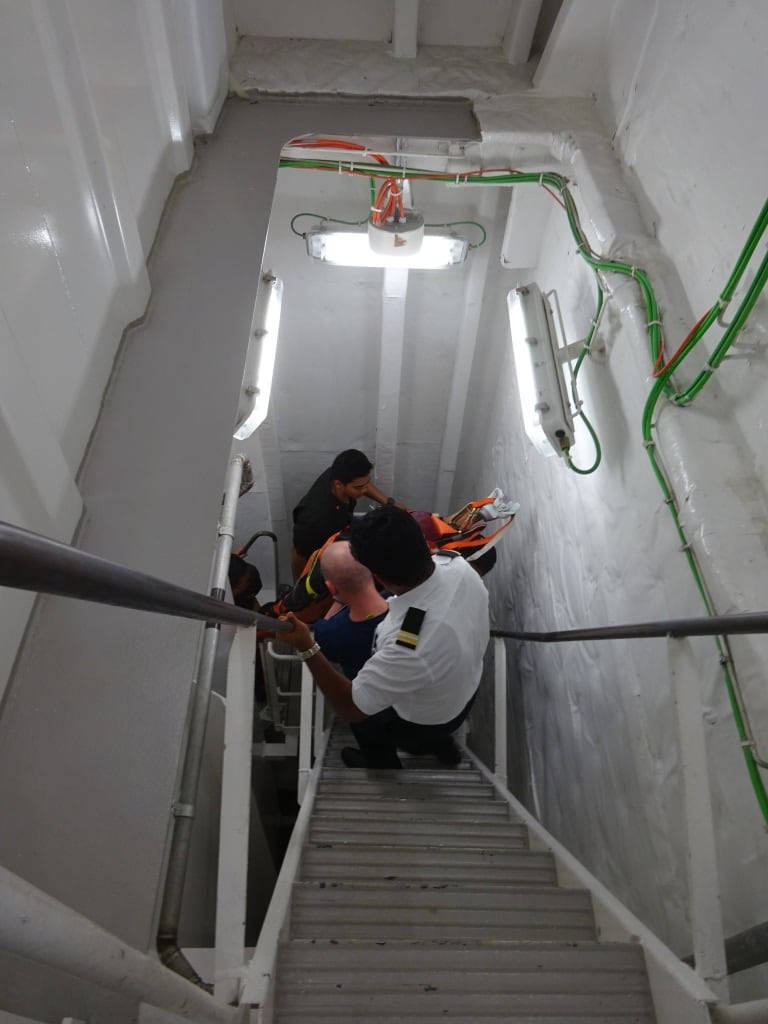
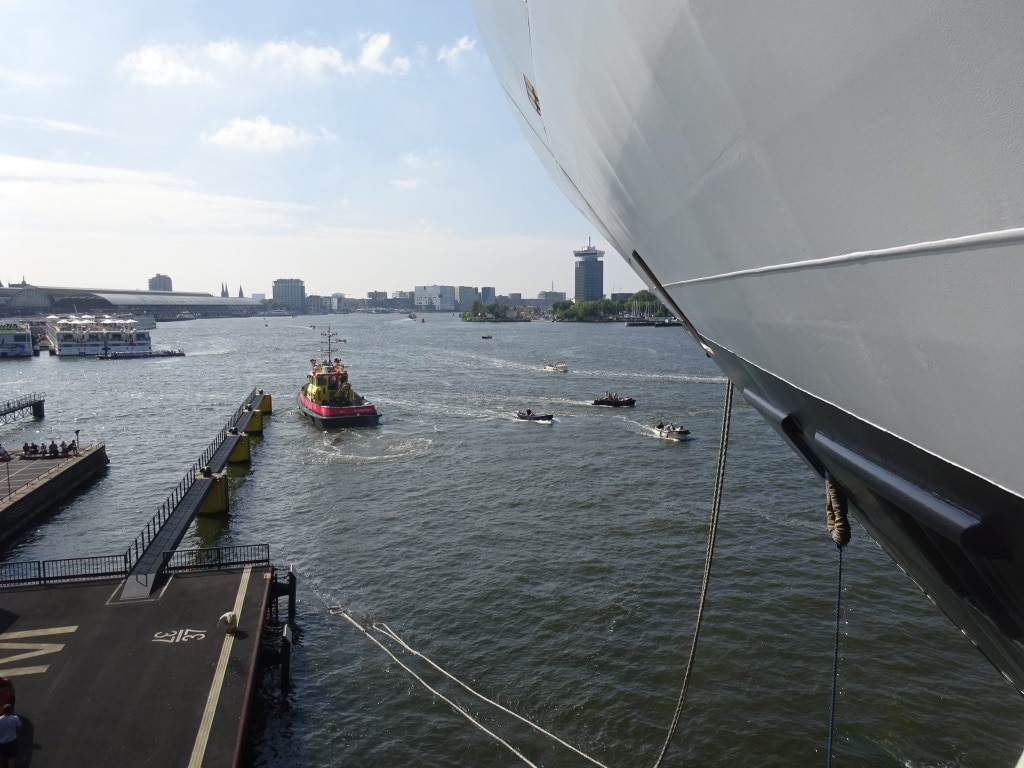
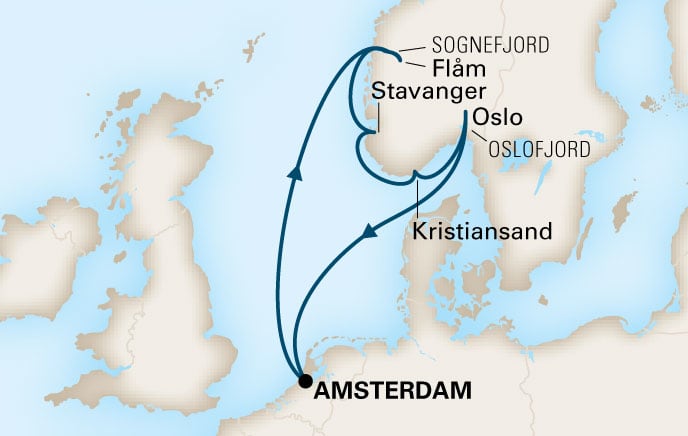 Just after 21.00 last night we were well into the open waters again and turned north towards Norway and the Sognefjord. And today we had a quiet day at sea. The officers on the bridge really appreciate these days as on cruises like this the port days are so hectic that a peaceful sea day is a nice way to recuperate and relax. The high light of this morning’s 4 -8 watch was: one course change of 3o to port to stay on the track line. That is one click on the button to confirm that the automatic pilot can do its job. The equipment is now so sophisticated that we could sail into port, and almost to the dock, only on the instruments as long as there would be no traffic in the way. Similar but at the same time different to the airline industry. Airplanes normally fly in set lanes or corridors and do not meet traffic. If they do then you normally read about in the newspapers. Airlines can and do fly completely on instruments and can do this also for take off and landing. Ships sometimes follow Vessel Traffic Separation Schemes where traffic follows the same route. But for most of the seas and ocean, it is a free for all (Mare Librium as the old folks used to say) so traffic can come from all sides.
Just after 21.00 last night we were well into the open waters again and turned north towards Norway and the Sognefjord. And today we had a quiet day at sea. The officers on the bridge really appreciate these days as on cruises like this the port days are so hectic that a peaceful sea day is a nice way to recuperate and relax. The high light of this morning’s 4 -8 watch was: one course change of 3o to port to stay on the track line. That is one click on the button to confirm that the automatic pilot can do its job. The equipment is now so sophisticated that we could sail into port, and almost to the dock, only on the instruments as long as there would be no traffic in the way. Similar but at the same time different to the airline industry. Airplanes normally fly in set lanes or corridors and do not meet traffic. If they do then you normally read about in the newspapers. Airlines can and do fly completely on instruments and can do this also for take off and landing. Ships sometimes follow Vessel Traffic Separation Schemes where traffic follows the same route. But for most of the seas and ocean, it is a free for all (Mare Librium as the old folks used to say) so traffic can come from all sides.